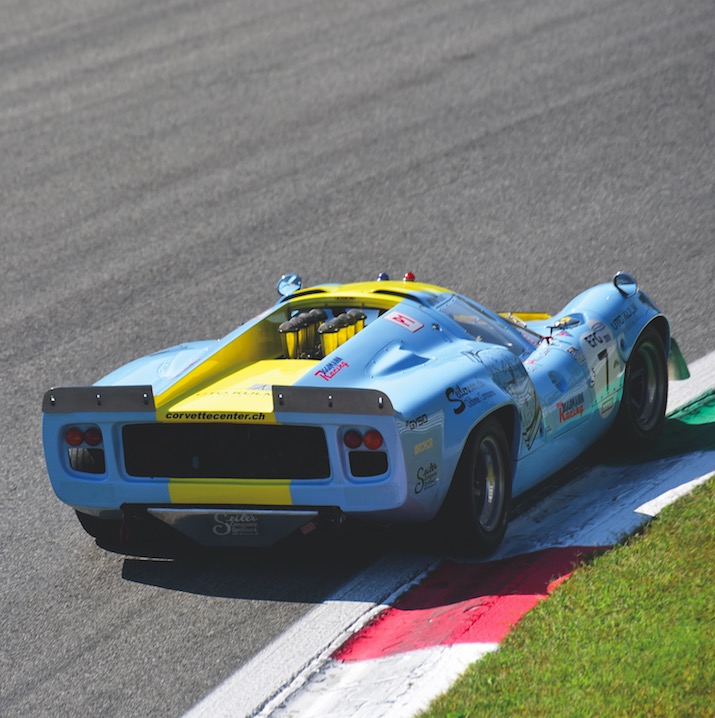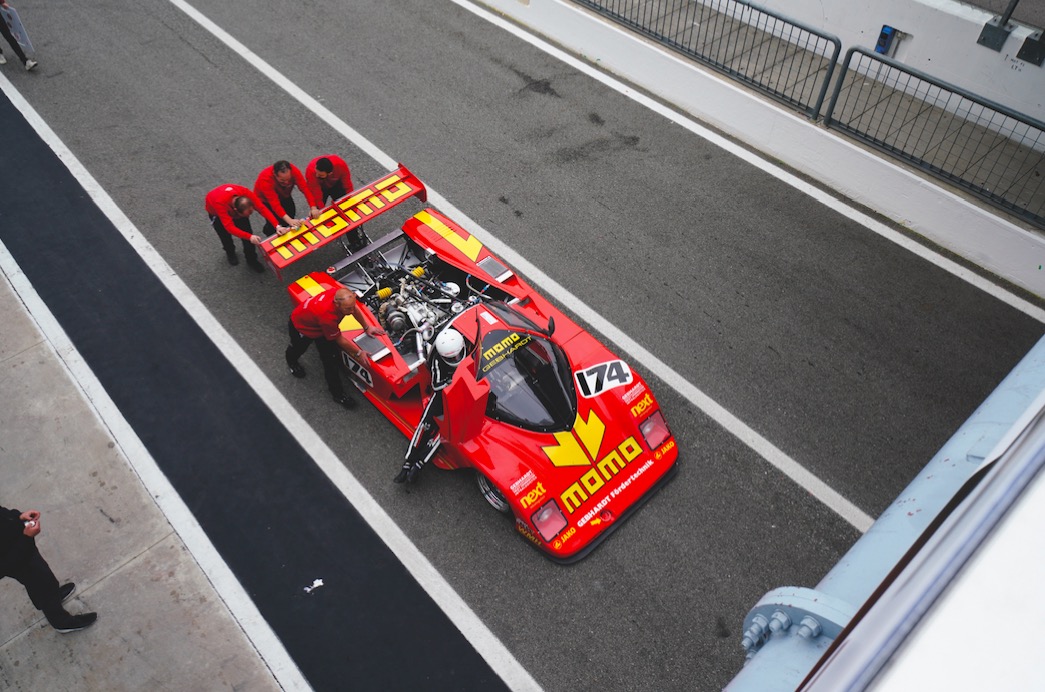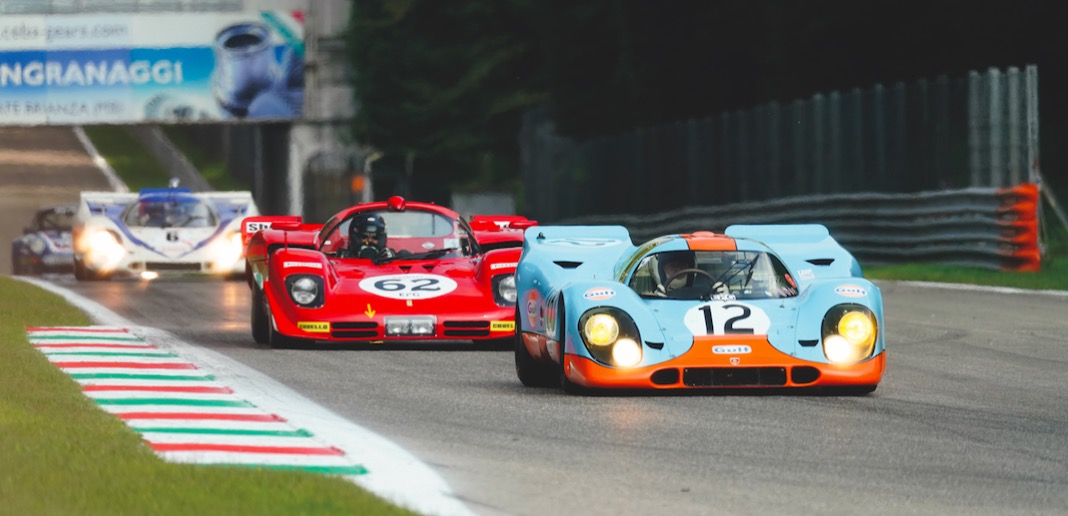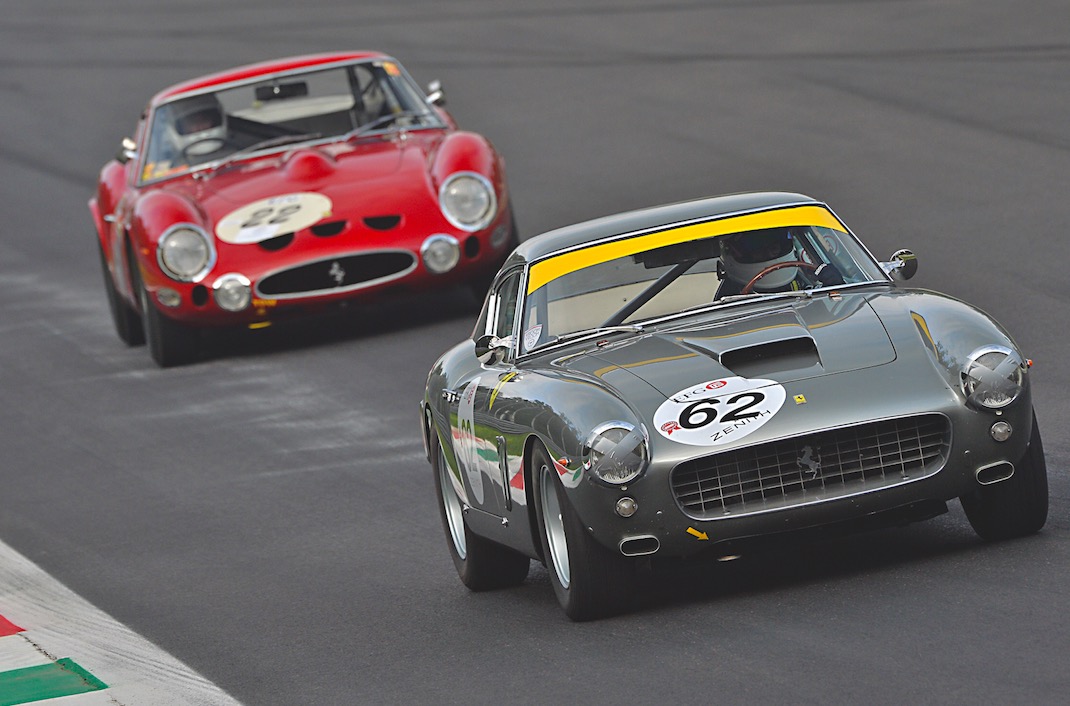Monza Historic
HOME » Magazine » November 2019 » Features and Reports » Monza Historic
Act Six
Monza Historic, sixth and penultimate act of the 2019 Peter Auto opera, performed on some of the most famous European stages, brought many expectations for the weekend of 20-22 September. The Autodromo Nazionale di Monza is one of the stages on which every motorsport actor likes to shine, either because, after the mutilation of so many European circuits it still lives up to its sobriquet of “the temple of speed” on which many epic pages of motorsport history have been written, or because it is one of those where the difference, as Jarno Trulli recalled in an interview a few years ago, is in the “guts” and not just the technicalities, which is why many actors look more favourably at Imola or Mugello. In short, it is a stage as famous as it is unforgiving. To make everything more complicated, capricious weather, characterised by two days of summer sun, and typically autumnal rain on the final day added to the challenge
Marco Zanello Reports
The first emotions came from the presentation of the Peter Auto 2020 calendar, relatively rich in novelties (see our Latest News section). Successful contributions were also made by the very rich paddock, full of mechanical jewels, some of which were regulars, with others making a first appearance. These included Ferrari 512, Porsche 917, Bentley Speed 8, Jaguar XJR14 and again the Ferrari 330 GTO, Howmet TX or Maserati T61, to name just a few.
However, the greatest attention fell on a Group C Gebhardt. No, we are not talking about Michael Lyons’s T91, already seen on the track several times and winner of race 1 in a photo finish, as well as taking an excellent second place in race 2 behind Kriton Lendoudis in the Sauber-Mercedes C11. We refer instead to the C88, a Group C2 assembled on the frame of the C873, distinguished by the use of an Audi 2 litre single-turbo 560 horsepower engine rather than the more traditional Cosworth DFL. The prototype, expertly reconstructed for the occasion, certainly cannot boast a glorious history, having participated mostly in Interserie competitions, but the technical solution adopted still attracted the interest of the public. Sadly, it did not run. The Group C category was also enriched by the presence of two famous Endurance names: Éric Hélary, overall winner at Le Mans in 1991, driving a very rare Jaguar XJR-14 shared with Gérard Lopez, and Ralf Kelleners, category winner on the Sarthe circuit in 1996, who shared Ivan Vercoutere’s Porsche 992C to third place in race 1.

The Gephardt C88 drew a lot of attention, but sadly, did not start the race. Photo Giacomo Zanello
Despite the greater youth and undoubted technical qualities, not even the Endurance Racing Legends prototypes managed to match the speed performance of the Group Cs. The two most awaited prototypes were the Bentley Speed 8 of Shaun Lynn and the Ferrari 333SP of Michel Lecourt and Raymond Narac, which took Pole. If the victory in race 1 smiled at the Bentley boy, in race 2 the top two players were absent, leaving victory to the beautiful Aston Martin DBR9 of Kriton Lendoudis and Rui Aguas, another old acquaintance from the endurance world.
While on the one hand some categories put on a show of absolute performance, others got attention for the intense battles they offered despite the fact that their top speed was not as spectacular. We speak in particular of the Geki Russo Cup, named after the late Italian driver who died during the 1967 Caserta GP, reserved for Formula 3 and Formula Junior.
Among the small single-seaters Tommaso Gelmini in a Branca FJ, took victory in race 2 thanks to the withdrawal of runaway race 1 winner Pierre Tonetti’s very fast Brabham BT6, The Italian’s victory was hard fought and only by the tiniest of margins over Jeremy Timms’ Chevron B15 F3 1000.

The Porsche 917s of Peter Vögele and Claudio Roddaro and the Ferrari 512S of Pierre Mellinger provided a very
pretty sight, as did the Ferraris of Carlo Vögle and Marcus Lindqvist. Photo ClassicRacing Courtesy Peter Auto
In the contest for 2-litre Porsches, after an hour and a half of racing the first five classified finished with a gap of only 21 seconds. The victory went to Richard Cook and Harvey Stanley, not particularly fast but unquestionably constant, with Mark Sumpter and Andrew Jordan in a safe second ahead of Andrew Kirkaldy, who had Andrew Smith and Oliver Bryant breathing down his neck at the finish.
Sixties’ Endurance, for the cars that made the history of endurance GT racing in the early ‘60s, was rich in participants, with 55 cars taking to the track, the Cobras monopolising the first five positions. Led by soloist Philipp Oettli, who jumped into the lead from the start, the Swiss was followed home by Charles Firmenich/Henri Moser, who scored the best lap of the race.
With six Capris either delayed or retired from the race, the Heritage Touring Cup did not produce the usual struggle between the BMWs and Fords. This brought the battle down to the one between the BMW 3.0 CSLs of Christian Traber, who led to the middle of the one-hour race, and Michael Erlich, who, after Traber’s retirement, fended off the attentions of Benjamin Poron’s Pinepac Mustang GT to take victory by just 3 tenths of a second in a sprint to the line after a safety car intervention had bunched up the pack. Over a third of the 30 + car grid retired before the finish.
A show within the show has become The Greatest’s Trophy, born from the ashes of the Nastro Rosso Trophy, with about twenty exceptional cars in each of the two races. Guillermo Fierro dominated in his beautiful and fast Maserati T60 Birdcage, with only Carlo Vögele in his Ferrari 330 GTO able to challenge. The Swiss led part of Race 2 but in the end could do nothing against his opponent.

Photo Fotorissima Courtesy Peter Auto
The two Classic Endurance Racing categories were the most awaited races of the weekend. CER1 saw the undisputed dominance of the Lola T70 MK III Bs which, in various versions, finished in the first four places. There was victory for Hélary paired with Gerard Lopez after a rather obvious race, while behind them Toni Seiler staunchly retained second place despite repeated attacks by Nick Sleep and Alex Montgomery. It was a joy to be able to see the Porsche 917s of Peter Vögele and Claudio Roddaro and the Ferrari 512S Pierre Mellinger, bringing with them a nostalgia for the famous duels of the early ‘70s.
There were fewer cars in CER2, in which Yves Scemama took a resounding victory in his usual TOJ SC304, crossing the line a full 25 seconds ahead of Henry Fletcher’s Chevron B26, which in turn was well ahead of Dominique Guenat’s TOJ 303, while Franco Meiners took fourth a lap down and won the GT victory thanks to his beautiful and powerful Lancia Beta Montecarlo.
These stories are all from the pages of Historic Motor Racing News. Some have been abbreviated for this web site. If you'd like to receive the full version, please visit our subscription page where you will find postal subscriptions available. A full subscription also entitles you to access the current issue online (available soon), so you can take it with you and read it anywhere, and we are working on providing full access to our archives of back issues exclusively for our subscribers.